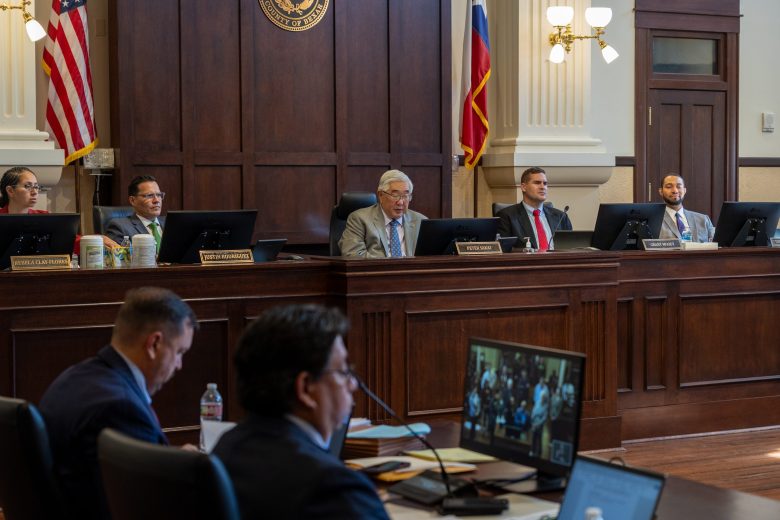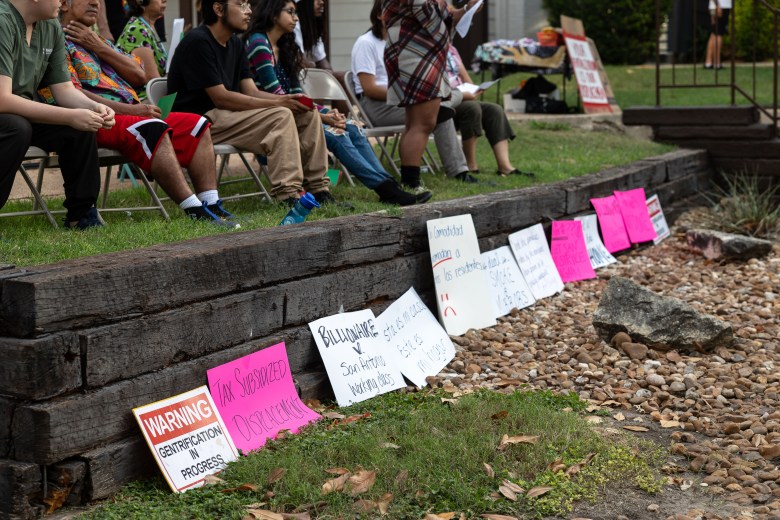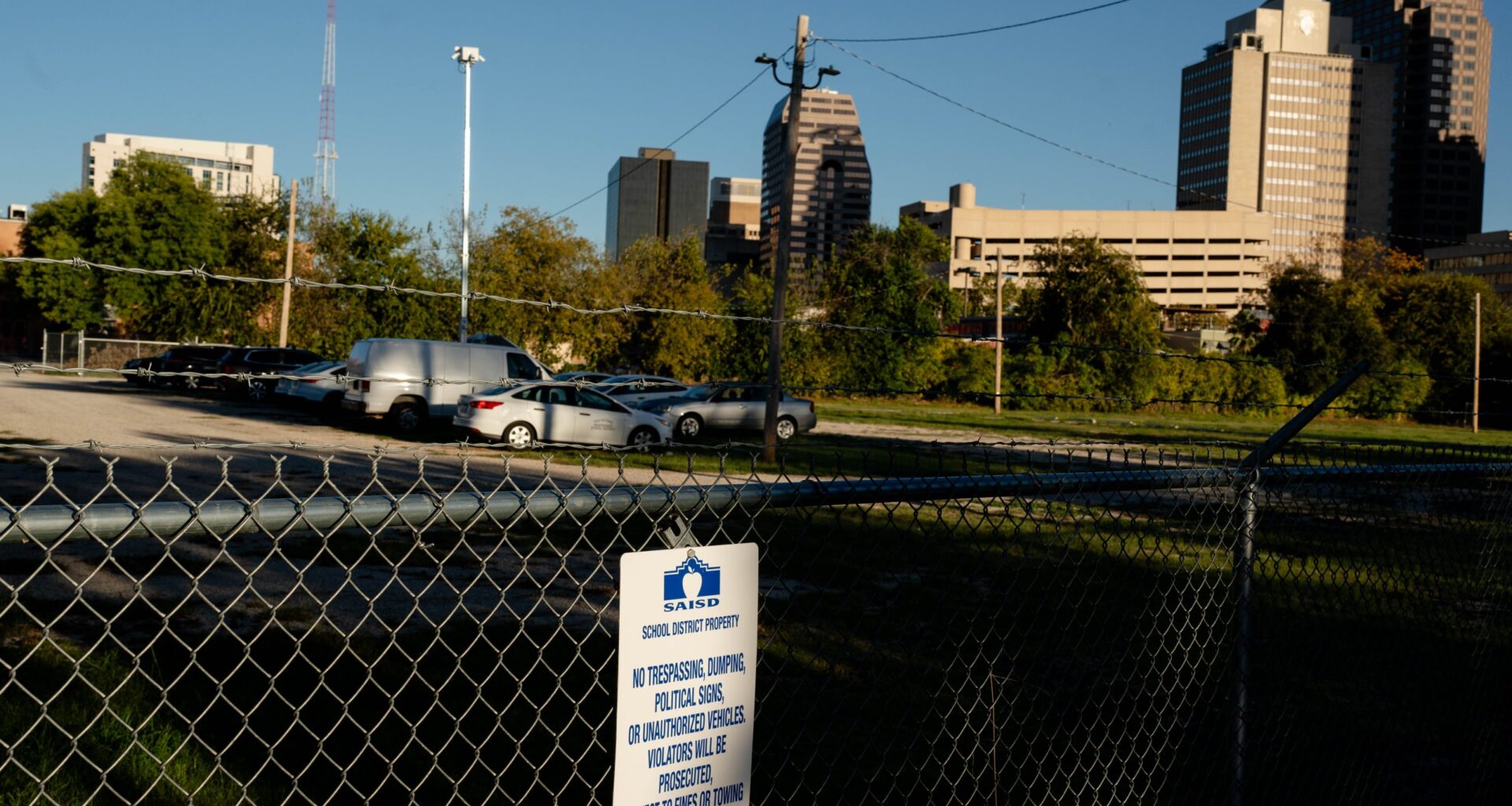Overview:
Two major downtown sports venue projects included no plans for affordable housing — until a local school district got involved last year.
Two major downtown sports venue projects included no plans for affordable housing — until a local school district got involved last year.
Now Bexar County is laying plans to create 1,250 affordable housing units in the urban core over the next five years, aimed at making up for a loss of family housing in the creation of a Minor League Baseball stadium in northwest downtown.
“Cities were doing this 60-70 years ago, and the attitude was that San Antonio was a low-wage city and it was [already] affordable to live here,” Commissioner Tommy Calvert (Pct. 4) said. “… But today, the court has signaled that [its members] understand that San Antonio and Bexar County have become too expensive for the average person.”
Both the Missions’ Minor League Baseball stadium and proposed Spurs’ NBA arena are expected to add thousands of downtown housing units in sports and entertainment districts surrounding the respective projects.
But because the venues are partly funded by tax increment reinvestment zones (or TIRZs), which collect property taxes from new development within a set geographic area, developers have said that new housing must be market rate to ensure there’s enough money to repay stadium and arena bonds.
Despite plenty of concern from housing advocates who worry about the impact on the community’s most vulnerable residents, no affordable units were planned as part of either project — until San Antonio Independent School District (SAISD) negotiated a deal to sell one of the last parcels of land needed to build the baseball stadium.
The district faces sinking enrollment that’s forced it to close campuses and lay off staff, so in addition to payment for the land, SAISD asked for a plan to build affordable housing suitable for families of school-age children.
 Bexar County commissioners shown meeting at the Bexar County Courthouse on Sept. 9. Credit: Diego Medel / San Antonio Report
Bexar County commissioners shown meeting at the Bexar County Courthouse on Sept. 9. Credit: Diego Medel / San Antonio Report
“Student enrollment directly impacts school funding, making the availability of affordable housing a vital factor in the district’s financial health and mission to serve the community,” then-SAISD Board President Christina Martinez said at the time, while rolling out asks that also included compensation for the land and a seat on the San Antonio Housing Trust board.
Now that the district’s land sale is a go, Bexar County Commissioners are trying to figure out how to make good on that promise — diving much deeper into an issue that’s not a part of its traditional state-mandated responsibilities.
“This whole project is to help rebuild and revitalize the downtown, especially from a housing component,” Bexar County Judge Peter Sakai said of the baseball stadium deal. “I think what’s really significant for today is that … we’re giving staff direction to create more affordable housing in the urban core.”
The terms of the agreement
SAISD’s agreement calls for the county to help facilitate housing that’s “family-oriented” and affordable, within both the urban core and SAISD attendance zones.
The new housing must be available to those earning between 30% and 60% of the Area Median Income (AMI) levels, meaning between about $32,000 and $77,000 for a family of four, and at least 500 of the units must be two- or three-bedroom.
So far the county’s plan focuses on a 36-square mile zone known as the Community Revitalization Action Group (CRAG) Area, which is centered on the San Fernando Cathedral, according to a presentation at Commissioners Court on Tuesday.
It involves making some policy changes to help developers assemble the funding for such housing projects, including tax abatements, expanding the use of Public Facility Corporations to include more family-friendly properties, land banking and working to lower borrowing costs — ideas put forward in collaboration with those who would be pursuing project vouchers to build the new units.
“This is a challenging, challenging goal, but it’s a goal that’s necessary in order for us to reverse years of people moving out of the urban core,” said Walter Martinez, a consultant representing Prospera Housing Community Services at Tuesday’s meeting.
Overall, Bexar County leaders were excited about this shift in strategy, and voted 4-1 to move forward so developers can start proposing projects soon.
“We will build on the framework in the coming month with additional policy directives to reinforce these strategies,” Sakai said. “Let’s get the job done. … Private sector, let’s look at those projects.”
Commissioner Grant Moody (Pct. 3), who cast the lone “no” vote on the framework, was skeptical about the “complex” and untested incentive strategy the county was setting into motion at the same time it’s contributing to rising rents.
“We won’t be able to hold back the market tide here downtown,” said Moody, the court’s lone Republican, who supported an affordable housing project for veterans just hours earlier in Tuesday’s meeting.
“We are literally making downtown more and more expensive, the sports and entertainment district, and the billions of dollars that are going into downtown — then we’re going to try to subsidize to continue to make housing more affordable at the same time we make it more expensive to go downtown,” he said.
Calvert, meanwhile, credited housing activists for a major county policy shift during the baseball stadium negotiations.
The stadium district involves razing the Soap Factory Apartments, a so-called “naturally-occurring” affordable complex that has about 380 units.
 Community members and housing advocates attend a forum outside of Soap Factory Apartments in September 2024. Credit: Bria Woods / San Antonio Report
Community members and housing advocates attend a forum outside of Soap Factory Apartments in September 2024. Credit: Bria Woods / San Antonio Report
After the City Council had already approved the deal, SAISD became a court of last resort, with critics packing school board meetings asking the district not to sell the parking lot without an affordable housing component.
“Sometimes in public policy, [these] things come [about] in a contentious way,” Calvert said. “Certainly this is in response to folks going down to SAISD, having signs, and being angry — rightfully angry — about a lack of investment in them.”

